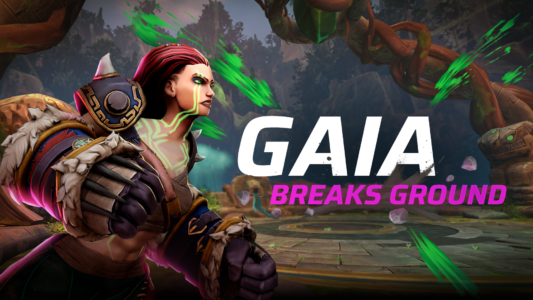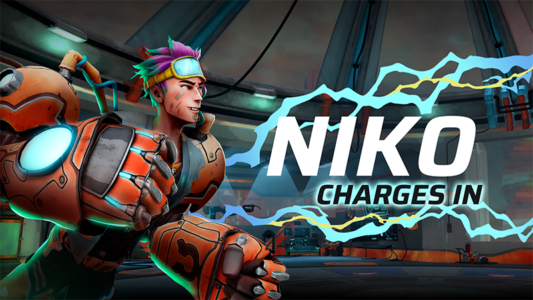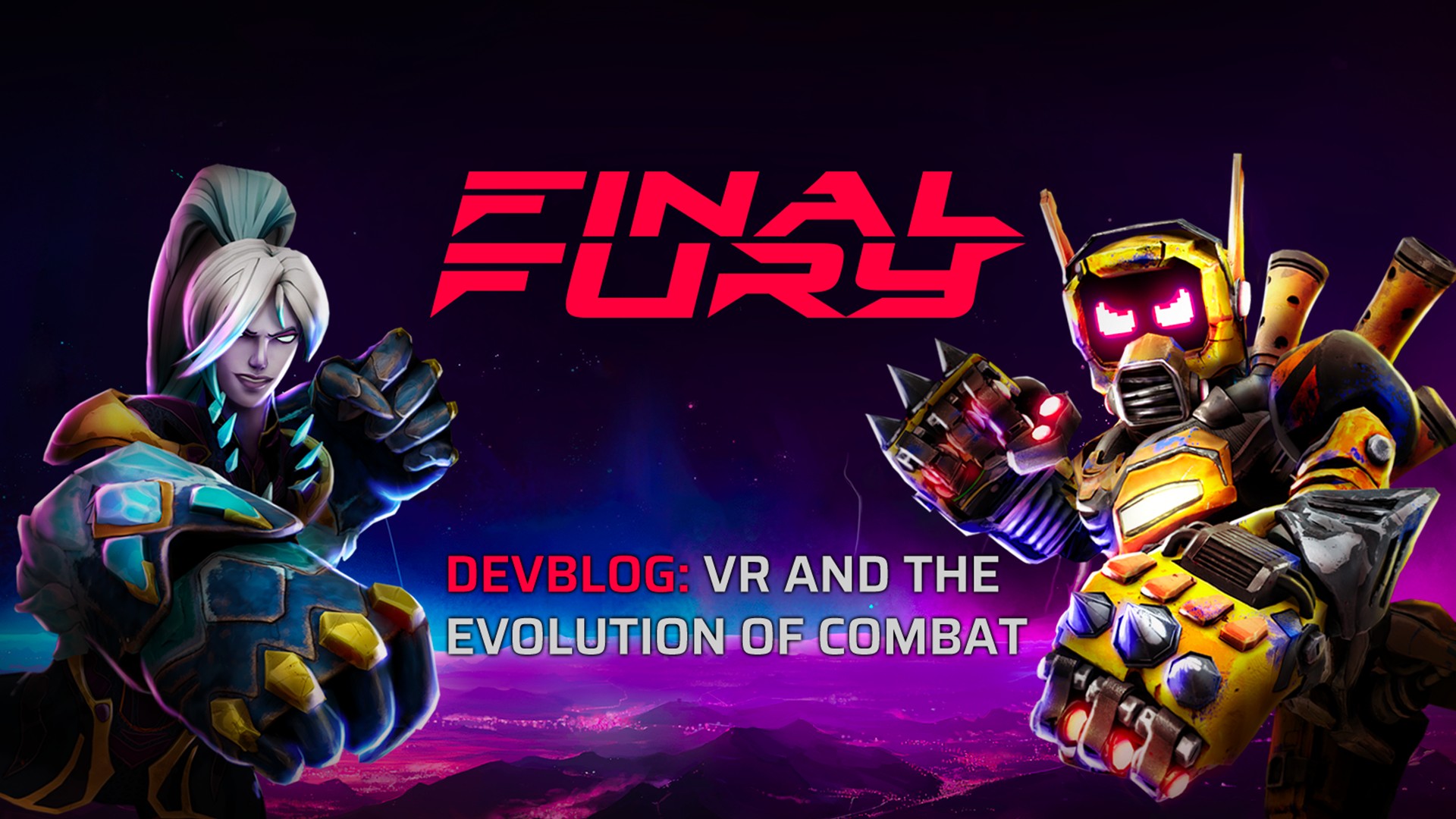
Inside Look at FINAL FURY: Building a Better VR Fighting Game
Taking FINAL FURY from concept to reality hasn’t been easy. Delivering a VR fighting game that’s both intense and intuitive means being nimble enough to change approaches when needed and make sure that the fighting feels right. That’s where the dev team is at in the process now.
We’re excited to go behind the scenes to break down how the team went from rough ideas to a more polished game in proper fighting form.

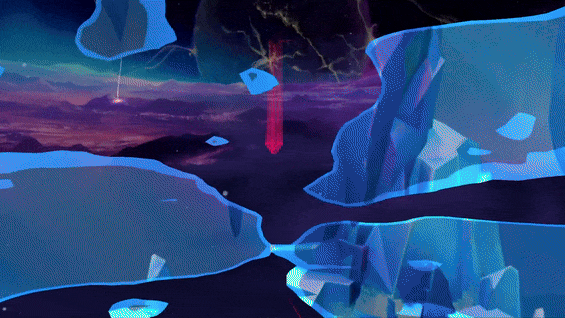
The Idea: How FINAL FURY Began
The concept for FINAL FURY comes from a love of arcade classics and translating that into a fresh take on VR combat. “How do you make every action, from throwing punches to dodging attacks, feel as real as possible?” That was the question we kept asking ourselves from the start. Translating this vision into a functional game presented some interesting challenges, particularly in balancing the immersion of VR with the complexity of fast-paced combat.
Bringing the Vision to Life: Prototyping and Iteration
“Building a VR game isn’t just about the visuals—everything has to feel right.”
During the early stages, the development team focused on prototyping the core mechanics. This involved a lot of trial and error to make combat feel fluid. The team experimented with different control schemes, camera perspectives, and combat animations to find the right mix.
One of the biggest challenges was creating a sense of rhythm in the combat. We know, we know, we make Synth Riders–but this is different. It wasn’t just about making the game responsive; it was about making it feel natural. This led to the realization that the 3 “C’s”—Camera, Character, and Controls—would be critical to the game’s success.


The 3 “C’s”: Camera, Character, and Controls
- Camera
“The right camera perspective makes all the difference in immersion.”
Getting the camera right in a VR game is key to making sure players feel truly immersed in the action. Initially, FINAL FURY used a mix of first-person and third-person views, but this led to a somewhat jarring experience. The frequent shifts between perspectives were distracting and pulled the players out of the moment.
To address this, the game now utilizes third-person perspectives sparingly – only during moments of player inactivity to give certain moves a more cinematic punch while minimizing the chance of motion sickness (something we’re actively monitoring). Non-visual feedback, like audio cues and haptic responses, also got enhanced to keep players grounded in the game world.
For example, when charging up Tempest’s Arctic Blast move, the player puts hands together and the controller ramps up vibrations. Who knows? Maybe it’ll tempt players to shout “Hadoken!” as they launch attacks.
By streamlining the camera system and minimizing distractions, the game now keeps players more engaged in the action, allowing them to focus on the core gameplay.
- Character
“Clear enemy animations help players react faster and stay in the zone.”
Combat in FINAL FURY needs to be fast and intense, but early versions of the game had a few hiccups that made it feel more chaotic than strategic. The challenges here were three-fold: Attack animations were often too slow which left key moments diluted due to an excess of superfluous motions. Characters’ movements felt similarly sluggish. Players also had an information overload with a floating UI and various VFX. Just trust us, not a good thing. Combined, this made it difficult for players to anticipate attacks and effectively respond.
The solution: Make opponent animations clearer and more deliberate. With key attack signals highlighted, players have more time to recognize and react to incoming threats. This change helped create a more predictable combat rhythm, where players could get into the zone and enjoy a more strategic and satisfying battle experience.
In addition to tweaking animations, simplifying the visual effects surrounding combat helps draw attention to what matters. Initially, the screen could get overwhelmed with feedback, making it hard for players to focus on the action. By reducing these effects, players can now concentrate more on their enemies and less on deciphering what’s happening around them. In short, FINAL FURY’s combat immerses players in the action without overwhelming them.
- Controls
“Simple controls mean quicker reactions and more fluid gameplay.”
Controls are the backbone of any great combat system and FINAL FURY went through several iterations to get them just right. Early on, the control scheme involved a mix of arm movements and button presses, which sounds cool in theory but didn’t always work well in practice. Hardly surprising, but more complex controls often led to frustration. Excessive inputs wound up being too restrictive, especially during intense combat sequences where quick reactions matter most.
Recognizing this, the developers simplified the controls and streamlined gestures.
The responsiveness of key movement (dodging, blocking, and counterattacking) also improved. These are crucial actions in any combat game, and the team obsessed over making sure they felt natural. By enhancing the speed and accuracy of moves, the game now allows players to more effectively own their actions in the arena.
This emphasis on dynamic pacing ensures that the rhythm of combat feels natural, maintaining a battle flow state. Whether executing combos or evading attacks.

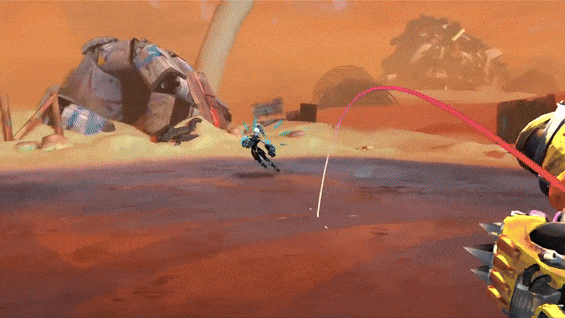
Don’t Play as a Fighter, Be One
“We need players to feel like they’re the ones throwing the punches, not just controlling a character on-screen.”
A core goal of FINAL FURY has always been to make players feel like they’re not just playing a game, but stepping into the shoes of their character. This sense of physicality is key to the FINAL FURY experience—the idea that players are directly in control of every punch, special move, and throw. Ultimately, we want the player to feel like a fighting game hero in direct control of a match’s outcome, not someone guiding the action from a distance.
To achieve this, the development team focused on ensuring that every action in the game felt impactful and responsive. The attacks, special moves, and throws must fulfill the fantasy that YOU are the character. The feeling of connecting with a punch, pulling off a special move, or delivering a backbreaking throw needs to feel visceral.
By integrating more direct control mechanisms and refining the feedback players receive during combat, FINAL FURY makes sure that every movement feels like it’s coming directly from the player. This creates a deeper sense of immersion and makes every fight much more personal.
Let Everyone Fight
“Balancing complexity with accessibility is key.”
While FINAL FURY was designed with hardcore gamers in mind, we truly want it to be approachable enough for anyone to grab the controls and feel ready to fight. As you’ve read here, everything the team’s done from refining camera and attack timing to the UI and animations has been done to make fighting more accessible to all. FINAL FURY is the result of countless hours of iteration and refinement perfecting the camera, character, and controls while emphasizing getting physical. Whether you’re a seasoned VR gamer or new to the genre, we’re designing FINAL FURY to offer an easy-to-pick-up but hard-to-master experience, with a rhythm that we think will keep you coming back for more.
In the coming weeks, we’ll be sharing even more about the next steps of FINAL FURY’s development along with some exciting news. Be sure to join our FINAL FURY Discord so that you can be among the first to know what’s coming!


